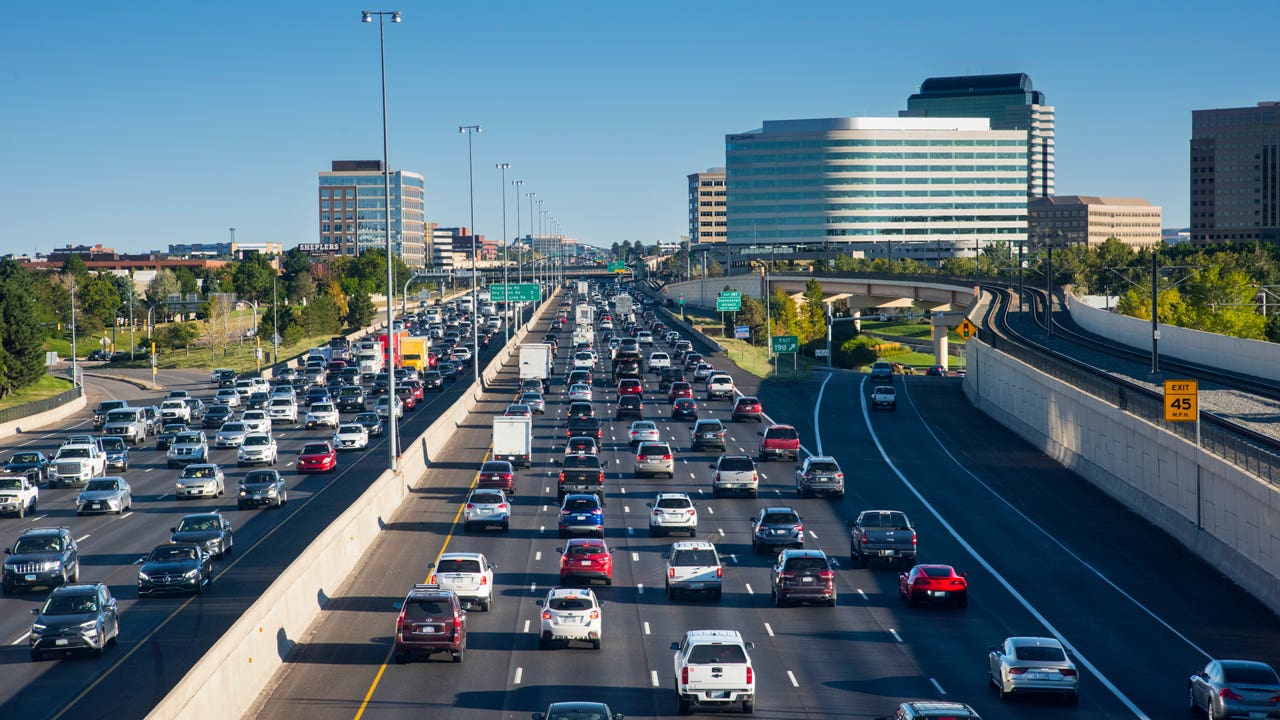Why is my car insurance so high?

The Bankrate promise
At Bankrate, we strive to help you make smarter financial decisions. To help readers understand how insurance affects their finances, we have licensed insurance professionals on staff who have spent a combined 47 years in the auto, home and life insurance industries. While we adhere to strict , this post may contain references to products from our partners. Here's an explanation of . Our content is backed by Coverage.com, LLC, a licensed entity (NPN: 19966249). For more information, please see our .
The national average cost of full coverage car insurance climbed 26 percent from 2023 to 2024, leaving many drivers wondering why coverage has gotten so expensive. Most states require drivers to carry some level of car insurance, but the rate you pay is influenced by a variety of personal factors. Understanding the influences behind your rate increase can help you figure out why your rate is climbing and what you can do to save on your premium.
Why is my auto insurance premium so high?
You may be asking yourself why your car insurance premium is so high this year. According to Quadrant Information Services, the average annual rate for a full coverage policy went up 26 percent from 2023 to 2024, with the current average cost of car insurance sitting at $2,543 per year. Some of the major factors influencing high rates are inflation, cost of repairs, poor driving habits and delayed rate increases filed with state insurance departments after the pandemic.
Additionally, your personal rating factors influence your cost of coverage. Car insurance premiums vary by individual person, so analyzing your policy next to your friend’s policy will probably not give you an accurate comparison. Below are some of the key factors that may be responsible for your high rates in 2024.
Car insurance company
Car insurance companies must file for permission to raise rates with the state department of insurance if they want to raise rates across the board for all policyholders. Many car insurance companies filed for rate increases in 2023. While average rates have risen in every state, the car insurance company you purchase insurance from will determine how much you pay and how much you can save.
Each insurance company has its own underwriting system for calculating premiums. Although all insurance companies will look at factors like vehicle type, driving history and location, carriers can weigh these factors differently, which is why rates vary between companies.
Additionally, not all car insurance companies offer the same discounts, and some companies may offer discounts that relate to your situation more. For example, if you are a parent with a student driver in your family, then you may want to look for companies that offer one or more student discounts. The best way to find the most affordable rate is to research different car insurance providers in your location and ask for a quote.
Coverage types and levels
The amount of insurance you carry can significantly impact your rate, and not only when comparing a liability-only policy to full coverage. Each state mandates its minimum coverage requirements, which differ vastly from one state to the next. Depending on your state’s minimum insurance requirements, you may pay more for a minimum coverage policy than someone else in another state.
Take the state minimum requirements for New York and California, for instance:
New York minimum requirements:
- $25,000 bodily injury liability per person and $50,000 death per person
- $50,000 bodily injury liability per accident and $100,000 death per accident
- $10,000 property damage liability per accident
- $50,000 personal injury protection (PIP)
- $25,000 statutory uninsured motorist bodily injury per person
- $50,000 statutory uninsured motorist bodily injury per accident
California minimum requirements:
- $15,000 bodily injury liability per person
- $30,000 bodily injury per accident
- $5,000 property damage liability per accident
Compared to California, New York requires more coverage and at higher limits. If you were to ignore all other rating factors, a New York policy, hypothetically speaking, could be higher than one in California based on state minimum coverage requirements alone.
Furthermore, if you are financing your vehicle, your lienholder will probably require you to carry comprehensive and collision, also known as full coverage. Many of the best car insurance companies also offer supplemental, optional coverage such as rental reimbursement, emergency road service and gap.
Generally speaking, the more coverage you opt for, the higher your premium will be. It’s critical, though, to balance price with protection; purchasing a subpar policy to save money can cost you thousands (or more) in the long run if you are at fault in an accident. Rather than reducing or removing necessary coverage, you may want to review your policy for other savings opportunities such as discounts.
Age
When you are considered a higher-risk driver by insurers, you typically face higher insurance premiums. Age is a significant factor when it comes to determining your risk because teen driver statistics show that new teenage drivers are more likely to get into an accident due to lack of experience. In fact, an 18-year-old driver on their own policy pays over two times more per year for full coverage compared to a 25-year-old driver. Elderly drivers, particularly those over 80, may also be at higher risk of getting into an accident and typically face higher rates.
It is important to note that some states do not allow car insurance companies to use age as a rating factor, namely Hawaii and Massachusetts. In these two states, a 25-year-old driver and a 50-year-old driver should pay the same or similar rates if all other factors are identical.
Geographic location
Insurance premium averages can vary by state, metro and even ZIP code due to factors like minimum coverage requirements, claim frequency, weather patterns and traffic density. If you live in a state prone to car accidents, theft, or weather damage resulting in more claims, the average insurance premium is likely higher. The average annual full coverage premium in Mississippi is $2,055, for example—much higher than the average annual premium in Maine at $1,507.
Driving record
Driving record is one of the most significant car insurance rating factors. Insurance companies use actuarial data to calculate premiums. Statistically, drivers with speeding tickets and accidents as part of their driving history are more likely to engage in high-risk driving behavior in the future. Insurance companies rate this risk accordingly in their premium calculations.
For example, a driver with a single at-fault accident on their record pays an average full coverage car insurance rate of $3,580—41 percent higher than the average for a driver with a clean record.
How to get cheaper car insurance in 2024
Since moving to another state may not be a feasible savings option and you cannot do anything about your age, consider the other factors that go into determining your car insurance premium. There are several ways you may lower your car insurance, including improving your credit score (where allowable), being a good driver and seeking out discounts. Additionally, you can shop around at different insurance companies to see which carrier will offer you the best rate. If you are in the market for a new car, you can also get a quote for a couple different vehicles to see which one might result in the cheapest premium.
Improve your credit score
According to the Insurance Information Institute, insured drivers with lower credit scores generally file more claims and are therefore a higher insurable risk. Taking the steps to improve your credit score may simultaneously improve your insurance premium depending on your location, your insurance company, and how drastically your score improves.
Car insurance companies determine rates differently, so just because one company places a heavy weight on your credit history does not mean that another company will do the same. Also, some states have banned or limited insurance companies from using credit as a rating factor, so depending on where you live, your credit score may not impact your premium at all. These states include California, Hawaii, Massachusetts and Michigan.
Since each provider calculates premiums differently, many insurance professionals recommend that you shop around for the best quote, even if you have lower-than-average or poor credit.
Practice good driving habits
Just one speeding ticket raises the average full coverage car insurance rate by $525 per year. Practicing good driving habits and having a clear driving record is probably the most simple and expected way to improve your insurance premium. If you have gotten several speeding tickets and had an accident or two, you have probably already seen your rate increase or expect a higher premium at your next renewal.
Some states offer defensive driver courses that can limit the number of points against your license and if the course is approved by your insurance company, you may be able to lower your premium. Additionally, some companies offer accident forgiveness plans that would keep your auto insurance from going up in the event of one accident.
Take advantage of discounts
Even though discount availability varies by state and insurance company, auto insurance discounts are the quickest way to automatically lower your premium regardless of your age, location, and driving history. When you are getting a quote, be sure to inquire what discounts may apply to your new or existing policy. There are many types of car insurance discounts including:
- Multi-policy discounts
- Multi-car discounts
- Good driver discounts
- Good student discounts
- Homeowner discounts
- Loyalty discounts
- Accident-free discounts
- New car discounts
- Anti-theft and safety restraint discounts
- Hybrid car discounts
- Employee/military discounts
- Pay-in-full or auto-pay discounts
- Defensive driving discounts
- Online/paperless discounts
- Low usage/mileage discounts
- Telematics discounts
- Senior discounts
Understanding what contributes to the cost of your insurance can help guide your financial decisions, driving behavior and how you approach looking for a provider. Although some aspects are beyond your control, you may find opportunities to lower your risk as a driver in the eyes of insurers and potentially obtain more affordable policies over time.
Shop around
Since there isn’t a standard car insurance rate that all companies use, some companies may offer more affordable prices than your current provider. By researching other car insurance companies in your location and asking for a quote, you’ll have a better understanding of how your current rate stands against the market. If you find a company that offers a cheaper premium for the same level of coverage, it may be worth switching carriers if other aspects of the new company also match up with your wants from a company.
Frequently asked questions
-
-
While auto insurance premiums are individualized, overall changes in the insurance industry can impact all policyholders. Your rate may have increased due to changes in your driving record or driving profile, such as receiving a speeding ticket or an increase in your annual mileage. If nothing has changed with your coverage selections or rating factors, it could be that your insurance company filed for permission to raise rates for all policyholders due to industry conditions.Over the past few years, the cost of vehicle parts and repairs has risen drastically due to inflation and supply chain shortages. With extreme weather and distracted driving claims increasing simultaneously, many insurance companies have filed for several rate increases. If you are unhappy with your current rate, you could shop your policy with other insurance providers or ask your agent about any available discount opportunities.
-
Policyholders usually experience a rate increase when they purchase a newer car, but not always. In this situation, rate changes can depend on what type of car you are buying, if you are adding or replacing a vehicle, what coverage you need and if any other life changes need to be accounted for. For example, if you replace a luxury vehicle that is only a few years old with a safer, budget-friendly make and model, your rates may go down since the parts for your newer car are likely cheaper.
-

